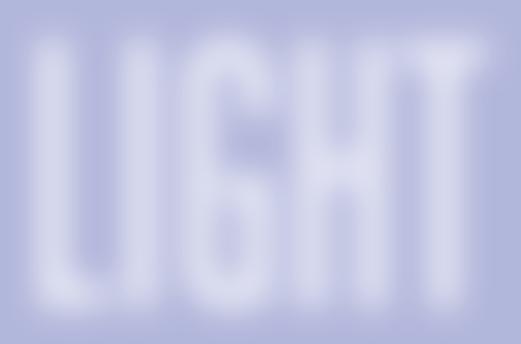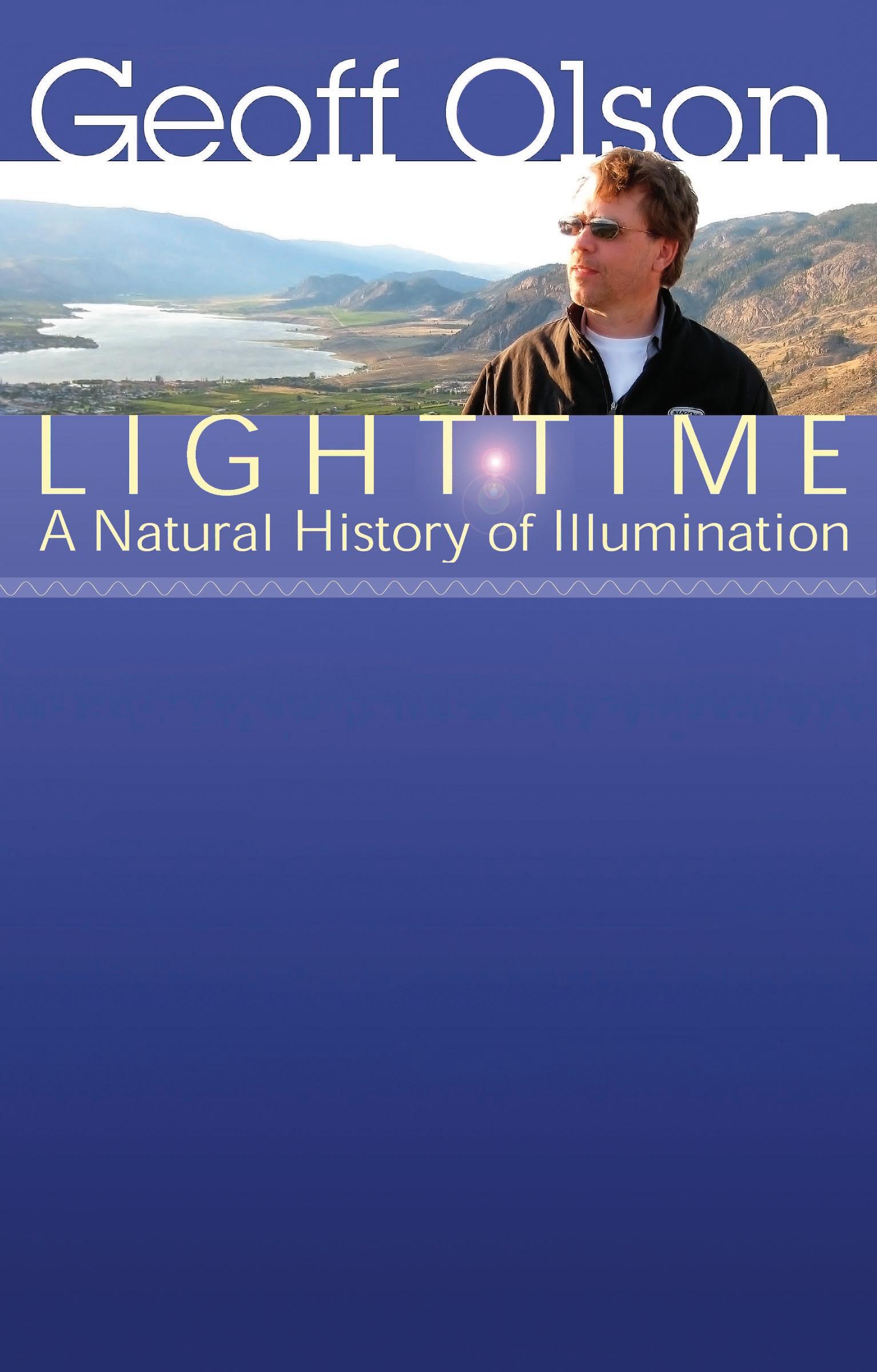
13 minute read
And then there was light
LIGHT by Geoff Olson And then there was Ancient and mysterious, this phenomenon continues to dazzle us

Advertisement
LIGHT STRIKES us to the core. A fiery sunset, an intense rainbow or an auroral display can evoke awe and joy. Generations of painters, photographers and cinematographers have created powerful works of art by exploiting the liminal properties of light. How is it that something so seemingly impersonal – waves of radiation from nearby or afar – can penetrate us so deeply?
Languages across the world associate light with awakening and awareness. In reaching understanding, we “see the light” or a “light dawns” on us. We talk of “illumination” and “enlightenment.” Clever people are “bright,” and the cleverest are “brilliant.” Thinking is referred to as “reflection.” We speak of the “light of the spirit,” and its inversion, a “dark night of the soul.”
The Indo-European languages act much like Rosetta Stones, constantly cross-referencing words for light and consciousness. Perhaps there is a connection between the implicit light of metaphor and myth and the explicit light of science. us to the core. A fiery sunset,
Albert Einstein

6 . . AUGUST 2010 The light of a blind resistance fighter
Few writers have captured the evocative nature of light as skillfully as French author Jacques Lusseyran. In his memoir, And There Was Light, Lusseyran tells of the kinship he always had with light rays, beginning when he was very young: “I liked seeing that the light came from nowhere in particular, but was an element just like air. We never ask ourselves where the air comes from, for it is the air and we are alive. With the Sun it is the same thing… Radiance multiplied, reflected itself from one window to the next, from a fragment of wall to cloud above. It entered into me, became part of me. I was eating sun.”
This fascination did not stop when night fell, Lusseyran wrote. When he came in from outdoors in the evening, he found the fascination again in the dark. “Darkness, for me, was the light, but in a new form and a new rhythm. It was light at a slower pace. In other words, nothing in the world, not even what I saw inside myself with closed eyelids, was outside this great miracle of light.”
At the age of eight, Jacques lost his eyesight in a schoolyard accident. Although totally blind, he was not left in complete darkness. “I began to look more closely, not at things but at a world closer to myself, looking from an inner place to one further within, instead of clinging to the movement of sight toward the world outside.
“Immediately, the substance of the universe drew together, redefined and peopled itself anew. I was aware of a radiance emanating from a place I knew nothing about, a place, which might as well have been outside me as within. But radiance was there, or, to put it more precisely, light. It was a fact, for light was there... I found light and joy at the same moment…”
The author claimed that this inner world of light would often accurately mirror the external world. While walking with a sighted friend in an area he had never been before, Lusseyran could indicate a particular line of trees on the horizon or some other landmark and his friend would confirm the scene. This seemed to be a strange talent indeed.
The blind teenager was safely above suspicion of dissident activity during the German occupation of France. Incredibly, he capitalized on his disability in 1941 to organize a local Resistance movement called The Friends of Liberty along with 52 other boys. The 17-year-old activist became head of recruitment and accurately assessed would-be resistance fighters through his heightened perception of vocalization. “Four-fifths of the Resistance in France was the work of men less than thirty years old,” Lusseyran wrote in his memoir.
At great risk, this blind leader of the French Resistance and his young friends began covertly printing a newspaper detailing Nazi atrocities and distributing copies in the middle of the night. Eventually, Lusseyran was caught and sent to the Buchenwald concentration camp, along with 2,000 other French citizens. Most of his friends died in the camps, but Jacques survived and moved to the United States where he taught French literature until his death in a car accident in 1971.
While most of us have never experienced anything comparable to Lusseyran’s “miracle of light,” is it possible his experience was the explicit form of what human beings have implicitly said about light for cento the movement of sight toward the world outside.
Jacques Lusseyran

turies, in myths, poetry and even popular song?

The mystery of light without
The light we see with the human eye, from violet to red, is just a thin wedge in the electromagnetic spectrum, from high frequency gamma rays to low frequency radio waves. But visible light has remarkable properties. Go far from the city, on a clear, moonless night. If it’s the right time of year and conditions are favourable and you know exactly where to look, you’ll be just able to see the galaxy M31 with the naked eye. This dim, little smudge is an island universe of a trillion stars, 2.5 million light years away. The stars’ ancient light set out long before human beings ever existed. Gaze up at a slowly circling firmament of stars and you are interacting with the greatest time machine in existence – the cosmos itself.
Science hasn’t rid the world of mystery; rather, it has made us appreciate its depth. Einstein wrote: “The most beautiful thing we can experience is the mysterious. It is the source of all true art and all science. He to whom this emotion is a stranger, who can no longer pause to wonder and stand rapt in awe, is as good as dead: his eyes are closed.”
Prior to Einstein, scientists were confident they had scrubbed the universe free of any ambiguous properties. Atoms were like hard, little billiard balls and light was a waveform, like ripples in a stream. All further discoveries would be refinements of existing knowledge, scientists believed. With just a few more decimal places added to their solutions, they could sit back and enjoy their clockwork cosmos, ticking along eternally and perfectly.
In 1905, a German clerk working in a Swiss patent office published a paper suggesting the capacity of radiation to generate an electric current might be better understood if light was conceived of as a stream of particles. Einstein had begun thinking about light as a boy, and about what the world would look like if he could travel on a beam of light. The paradoxes resulting from his thought experiment led to his groundbreaking paper on the Special Theory of Relativity. Under extreme conditions, time and space can become as rubbery for the observer as a dividend statement from Bernie Madoff. Mass is equivalent to energy and only space-time, an abstract combination of all four dimensions, retains its universality for all observers.
It was Einstein who determined that light some
times behaves like a particle, and at other times like a wave, a property that was later discovered to extend to all atomic objects. Particles and waves are about as different from each other as cheerleaders and Cheerios, and they are quite impossible to reconcile conceptually. The great American physicist Richard Feynman cautioned against attempting to understand the concept of wave-particle duality, admonishing, “Do not keep saying to yourself, if you can possibly avoid it, ‘But how can it be like that?’ because you will get down the drain into a blind alley from which nobody has yet escaped. Nobody knows how it can be like that.”
Einstein turned out to be a reluctant revolutionary. This wild-haired Bolshevik of twentieth century physics couldn’t abide the uncertain direction his scientific revolution took. He led the charge against the temple of Newtonian physics, but he refused to join his colleagues in the final demolition. “God does not play dice with the world,” he insisted in his arguments with Danish physicist Bohr. Yet there is now abundant laboratory evidence that unpredictability reigns supreme at the atomic realm. Newton’s majestic clockwork has been replaced with a cuckoo clock cosmos, hooked up to a random number generator.
Darkness, for me, was the light, but in a
new form and a new rhythm. It was light
at a slower pace…nothing in the world,
not even what I saw inside myself with
closed eyelids, was outside this great
miracle of light. – Jacques Lusseyran
something is lit up, its outline is sharp and it is clearly defined. When we are in darkness, we bump around in confusion and lose our way. Yet the millennia-old linguistic linkage of light to consciousness seems to transcend the obvious connection between seeing and understanding.
There was a time when “illumination” and “enlightenment” were more than metaphors. Several thousand years ago, so-called “Mystery cults” were widespread across the Mediterranean area. Historians have only fragmentary knowledge of these ceremonies, but they appear to have sometimes involved spurring a transformative inner light among the participants.
The most important of these initiation ceremonies was held every year for the cult of Demeter and Persephone, based at Eleusis in ancient Greece. This major festival of the ancient world, open to all levels of Greek society, was believed to have begun in the Mycenaean period, around 1600 BC, lasting for two thousand years. For a tradition as long-standing as this – the longest in human history – we know remarkably little about the details of the Eleusinian Mysteries. Although they were sworn to secrecy, ensuring that little was recorded for posterity, the initiates were allowed to speak of their experiences in general terms. According to Plato, “the ultimate design of the Mysteries … was to lead us back to the principles from which we descended, … a perfect enjoyment of intellectual [spiritual] good.” In Ancient Mystery Cults, Walter Burkert described mysteries as “initiation rituals of a voluntary, personal and secret character that aimed at a change of mind through experience of the sacred.” During the course of these rites, in the supreme moment of revelation, initiates experienced some kind of supernatural luminosity. As Hippolytus wrote, the purpose of encountering the light is to discover “the sublime mysteries of nature.” It was a literal illumination that was simultaneously felt, heard and seen.
The visions of light were sometimes imparted with a powerful revelation, filtered through the cultural consciousness of the time. The Latin writer Apuleius wrote of his revelation from initiation into the Mysteries of Isis: “I am Nature, the universal Mother, mistress of all the elements, primordial child of time, sovereign of all things spiritual, queen of the dead, queen also of the immortals, the single manifestation of all the gods and goddesses that are known to you on Earth.”
This fragment from Themistios contains a telling line: “The soul at the point of death cont’d page 18…
presents SPECIAL EVENTS
Light is immaterial – pure energy, oscillating in an empty field. According to the equations of relativity, time slows down as objects approach the speed of light, implying that light itself exists in a timeless dimension. Yet upon observation, it collapses into the field of time. Physicists have proven that mass-less particles of light, called photons, can be in spooky correspondence with each other though they may be light years away, even though Einstein once conceived this very state of affairs as proof that quantum theory must be wrong because it was in complete violation of any common sense picture of reality.
Einstein determined that time and space change according to the observer’s frame of reference, while Heisenberg and Bohr discovered that the observer’s role affects the outcome of atomic experiments. With the observer reintroduced, you might say the twentieth century revolution in physics began to address the division between the objective and subjective – the hard-edged, measurable world “out there” and the inner worlds of sensation and feeling, “in here.” We still haven’t bridged the gap between the world as it is known and the world as it is felt. But light, with all its abiding mysteriousness, may be one avenue to reach this seemingly impossible goal.
The mystery of light within
So what of the subjective description of light and all the metaphors for awareness and thinking – “reflection,” “brilliance,” etc. And what connection, if any, exists to the ambiguous light of quantum physics? On one hand, it seems perfectly obvious why light should be used as a metaphor for awareness. When
September 15, Wednesday, 7:30 pm Vancouver Public Library, Van Dusen Room, 350 W. Georgia

We continually connect light and consciousness through language. We “see the light,” or a “light dawns” on us. We talk of “illumination” and “enlightenment.” Geoff Olson’s talk ranges from the mystery cults of Ancient Greece to the radical cosmology of the inventor of the Bell Helicopter. Using compelling visual images, Olson speculates on what the human connection to light might mean for human evolution.
Olson is a Vancouver-based writer and political cartoonist. His work has appeared in The Globe and Mail, Adbusters, Maclean’s, This Magazine, and The National Post. His commentaries have aired on CBC NewsWorld and CBC Radio. He is a regular contributor to Common Ground and the Vancouver Courier. Tix: $15 at door or $12 through Common Ground 604-733-2215





Prevention & Cure








If you think our Infla-Heal Plus is amazing, wait until you see the lab it’s tested in.
We believe in the wisdom of age old remedies. We also believe, however, these can be made even better with the help of modern day science. That’s why we test all the proteolytic enzymes using our Spectrophotometer to ensure the best quality and efficacy possible.
Why choose INFLA-HEAL PLUS
Breaks down damaged connective tissue for elimination µ
Heals tennis elbow, improves blood circulation, prevents varicose µ
veins, eliminates muscle & joint pain and combats respiratory diseases
Contains the strongest safe proteolytic healing enzymes available µ
No more pain! Start playing again at the activities you love to do: µ
run, bike, climb, ski, canoe… to your nearest health food store!



240 hours of testing and research every week. Our full-time laboratory is staffed with 1 PhD, 3 MSc and 2 BSc All ingredients tested 3 times for identity, purity, PCBs, heavy metals, potency, 37 pesticides, aflatoxins, and microbiology














